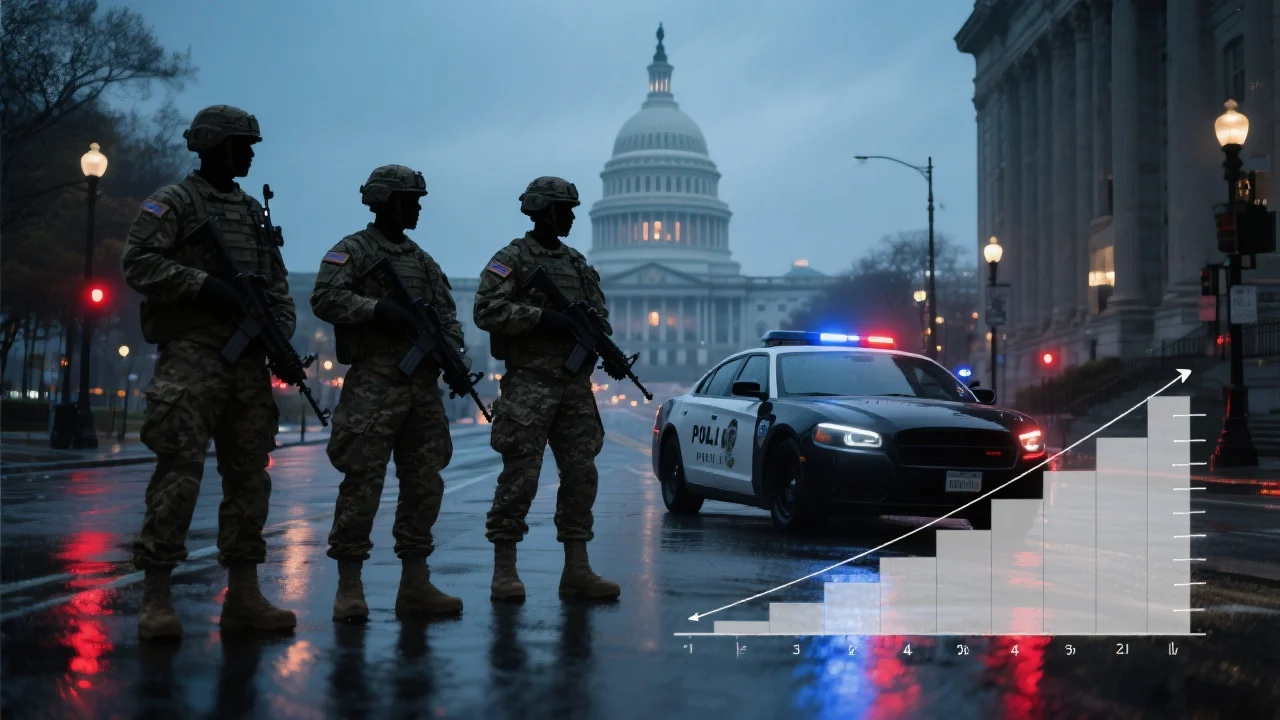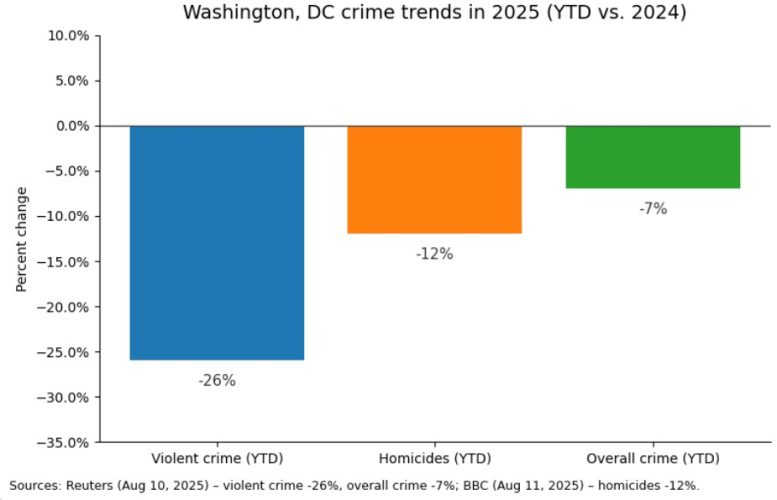
Trump declared a public safety emergency, took temporary federal control of DC’s Metropolitan Police under the Home Rule Act, and ordered National Guard support. He’s framing the capital as “lawless.”
But DC’s own numbers show violent crime has fallen sharply since 2023 and is down further this year, which is why you’re seeing so much “violence is down” pushback.
The data, upfront
DC’s violent crime dropped to roughly a 30-year low by early 2025 and is down an additional double-digit percentage year-to-date. Homicides are down year-to-date, and overall crime is down as well. Multiple outlets cite the MPD’s figures and trend lines, even as the White House leans on 2023’s spike to make its case. See reporting and context from BBC, Reuters, Axios, and CNBC for the latest summaries and fact-checks: BBC live coverage, Reuters, Axios DC, and CNBC.

[Chart: Washington, DC crime trends in 2025 (YTD vs. 2024)]
Alt text: Bar chart showing DC crime changes year-to-date vs. 2024: violent crime approximately −26%, homicides approximately −12%, overall crime approximately −7%.
Methods and sources
The chart visualizes widely cited year-to-date changes for 2025 vs. the same period in 2024: violent crime down roughly 26%, homicides down roughly 12%, and overall crime down roughly 7%, as reflected in MPD summaries referenced by Reuters, BBC, Axios, and CNBC on Aug 10–11, 2025. Exact figures can vary by cutoff date and dashboard refresh; I can update the chart and copy with the latest MPD weekly data at any time.
What makes this move unprecedented
This is the first time a president has used Section 740 of the Home Rule Act to assume control of the MPD. The authority is time-limited and expires after 30 days unless Congress extends it, which sets up a legal and political fight over DC’s “home rule.” Coverage and analysis: the Guardian, BBC, and CNBC.
Narrative vs. numbers
There’s a clear tension between the administration’s emergency framing and the current statistics. The White House points to the high-profile disorder people can see—encampments, viral incidents, and the reported assault of a young administration staffer—while the citywide data show broad declines since 2023. BBC’s fact-check and Axios’s “reality check” highlight this gap plainly.
Why now
Optics matter. Visible street disorder and individual incidents create powerful images, even when overall trends are improving. Exercising unique federal authority in DC lets the administration dramatize a law-and-order push, tie crime to homelessness policy, and test the limits of executive power in the nation’s capital. See the Guardian for the incident backdrop and Reuters on the homelessness crackdown language.
What to watch next
Courts will be asked to weigh in on whether federalizing the police and deploying the Guard were necessary and lawful. Congress will decide whether to let control run beyond 30 days. On the ground, the key questions are rules of engagement, civil liberties concerns, and whether the surge changes crime or simply changes the city’s posture. CNBC has the best roundup of immediate legal and political responses.
